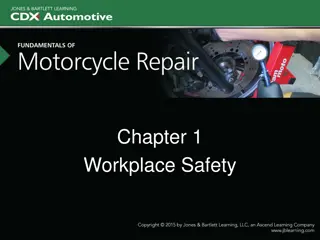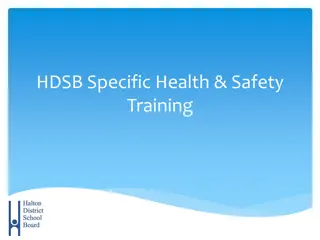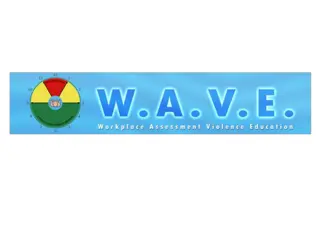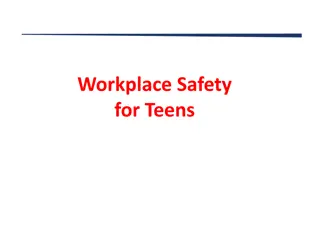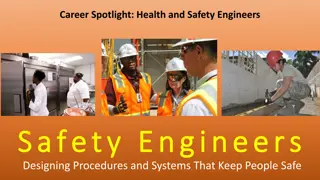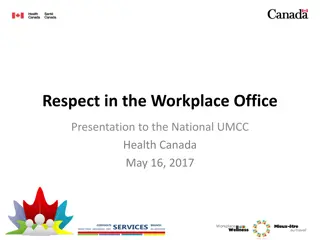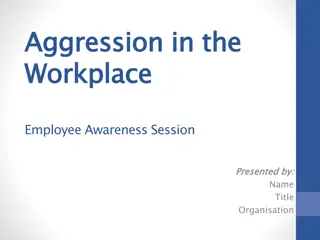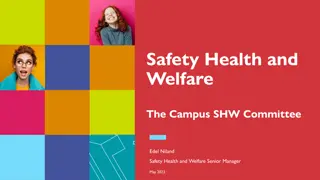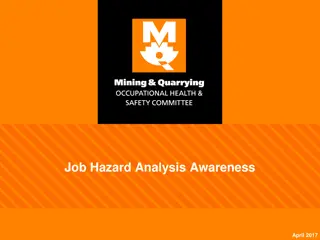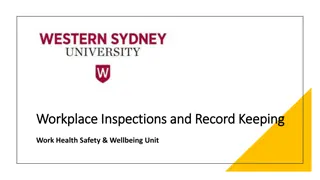Workplace Health and Safety Awareness Training
Explore the importance of health and safety in the workplace, focusing on common hazards, safety signage, and manual handling techniques. Learn about different types of safety signs and how to interpret them correctly. Engage in practical exercises to test your knowledge and ensure a safe work environment for all employees.
Download Presentation

Please find below an Image/Link to download the presentation.
The content on the website is provided AS IS for your information and personal use only. It may not be sold, licensed, or shared on other websites without obtaining consent from the author. Download presentation by click this link. If you encounter any issues during the download, it is possible that the publisher has removed the file from their server.
E N D
Presentation Transcript
Teacher slide Objectives: Students will learn about health and safety in the workplace. They will also look at commonly displayed safety signage, how to recognise the different types, and a short exercise to test their knowledge. You need: WEX Health and Safety Recognise the Sign. Enough for one per student. The recommended time for this resource is 20 minutes
Work Experience: Health and Safety
Health and Safety You will see safety signage around your work experience place of work. These exist to keep employees safe and remind them of any rules they must follow. This presentation will explore some common workplace hazards and how to avoid them. Every workplace will have slightly different regulations. Every business in the UK has to display a Health and Safety Law: What you should know poster.
Slips and Trips Slips and trips happen for a number of reasons. Sometimes it is down to an uneven walkway or obstructions in walkways, and sometimes human error. There are several things that can be done to avoid slip and trip hazards: - Making sure all walkways are kept clear of clutter/trailing wires with all employees having a see it, sort it attitude - Suitable footwear being worn at all times on site - Taking care if carrying anything that obstructs your view ahead
Manual Handling Lifting and carrying are actions that many employees perform on a daily basis at work. It is important that employers and employees alike are aware of how to perform any manual handling safely. Here are some tips: Keep your back straight Bend at the knees Get a good grip with your hands Keep your eyes looking straight ahead If it is too heavy to lift comfortably by hand, ask for the help of a colleague or ask if there is a different way to move the item.
Safety Signs In the UK, there are 4 main types of safety signage. They are colour coded and each colour means something different. They have pictures on them so they re easy to decipher. The four colours are red, yellow, blue and green. See the next slide for examples of these types of signs.
Safety Signs Prohibition: Red. Prohibits behaviour likely to increase or cause danger. E.g. no access for unauthorised persons Mandatory: Blue. Prescribes specific behaviour. E.g. Eye protection must be worn Warning: Amber/yellow. Gives warning of a hazard or danger. E.g. Danger: electricity Emergency or First Aid: Green. Gives information on emergency exits, first aid or rescue facilities. E.g. Emergency exit
Activity Recognise the Sign? Can you guess what each of the safety signs mean? On your Student Worksheet, you ll find 12 signs that are commonly seen in the workplace. Can you guess what they are?
Recognise the Sign 1.__________ 2.__________ 3.__________ 4.__________ 5.__________ 6.__________ 11._________ 12._________ 7.__________ 8.__________ 9.__________ 10._________



